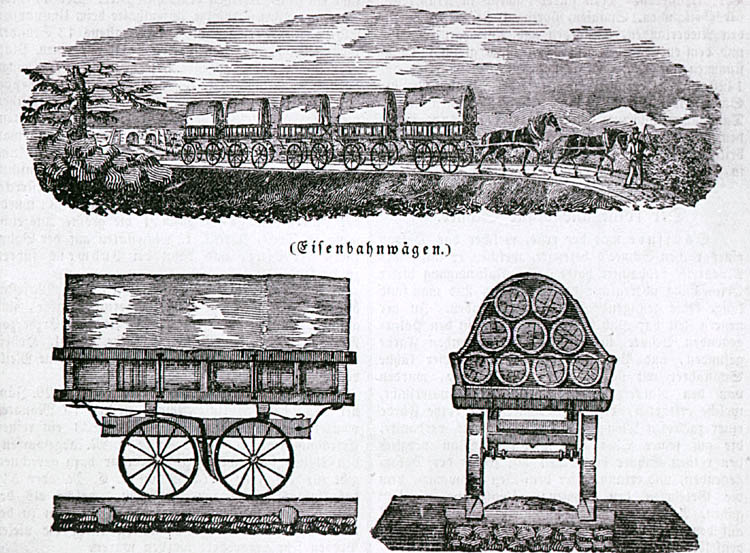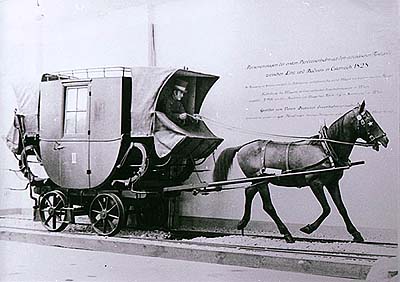
Goods wagons -

and passenger coach of the horse drawn railway of South Bohemia
In the 1833 Journal of Agriculture, previously quoted, is says "The service waggons are made of wood or plate-iron, we believe the later are preferred. They discharge their contents through the bottom. They are placed on a frame-work, supported on four wheels of cast-metal, 35 inches in diameter, and they weigh about one ton each, and are intended to carry a burden not exceeding two tons. They are fastened together by a strong iron bolt passing through eyes in bars of iron, and at the inclined places they have precautionary safety chains attached to them. They have each, besides, a drag, like a hammer-headed lever, which operates on the tires of the fore and hind wheels at the same time. Four waggons loaded, of a gross weight of 12 tons, is one horse draught; and he can walk away with this at the rate of at least three miles in the hour."
There are no pictures on the web of these wagons but they may have been similar to those used in Austria around the same period.
 Goods wagons - |
 and passenger coach of the horse drawn railway of South Bohemia |
The South Bohemia railway had its origins in 1820 when Franz Antonin Gerstner, then a professor at the Vienna Polytechnical School, traveled to England to study the details of railway. When he saw Stephenson's railway, he became convinced that the future of transportation lay not in horse power, but in steam. After returning to Austria, he set to work on the project, and on September 7th, 1824, the Emperor Franz I granted a charter for the construction and operation of a "wood and iron road", and the "First Austrian Railway Company" was formed. In the summer of 1825 construction began and on September 7th 1827, the first horse drawn train traveled over the track. Steam operations were implemented on the line September 1st, 1872.
Please feel free to contact me by e-mail at elliottsimpson@hotmail.com
May 2019